London Bridge shot might have passed through bus
- Published
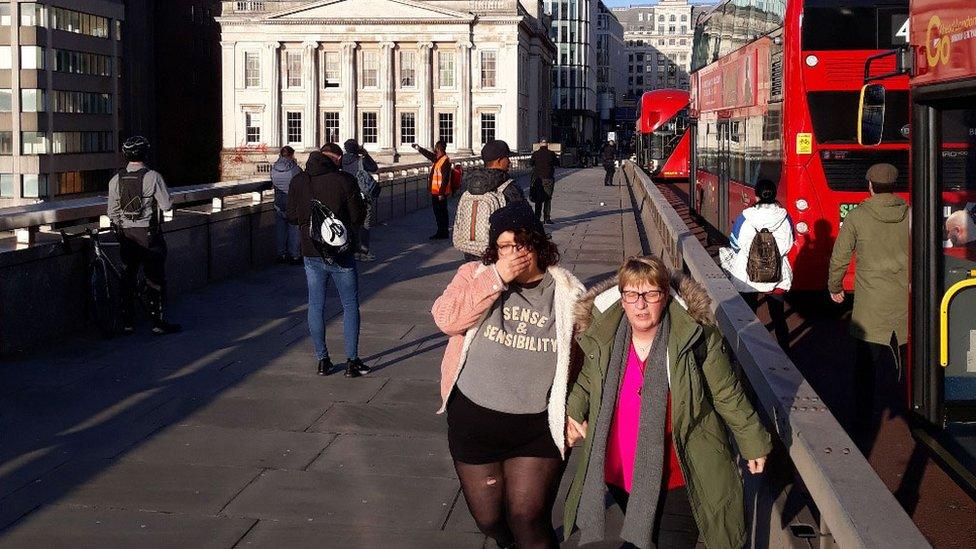
This previously unpublished picture shows London Bridge soon after the attacker was shot - with the bus on the right that was hit
A ricochet from a police bullet could have passed through the entire top deck of a bus during the London Bridge terror attack, pictures reveal.
The police have suggested a ricochet could have hit the bus, stopped near to where attacker Usman Khan was shot.
A picture given to BBC News by an eye witness on the bus behind shows a round hole and a shattered back window.
But a closer examination of other photos from the bridge reveals a hole in the front window of the bus as well.
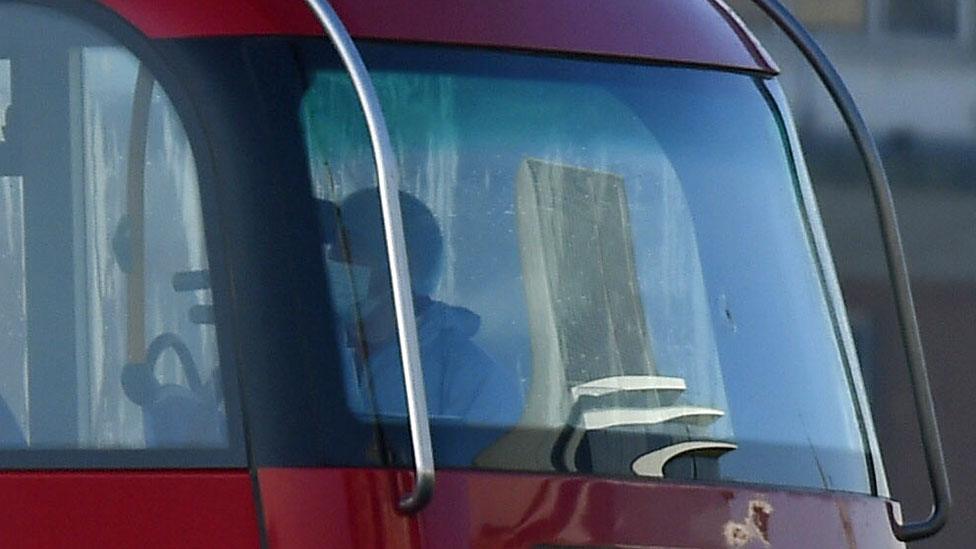
The front window of the bus also appears to have been hit - with a forensic examination taking place
The eye witness, who does not want to be named, believes the bus he was on was also clipped.
He was at the front of the upper deck when he saw, heard and felt the impact of the back window of the bus in front shattering, and immediately dived to the floor.
"We are talking about a split-second of noise," he said.
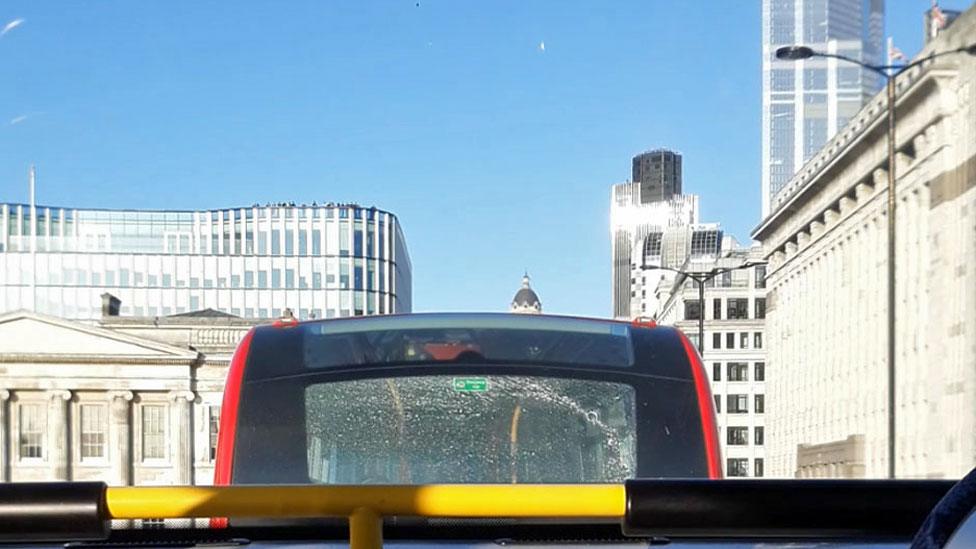
The picture given to BBC News by a passenger on the bus directly behind shows a round hole and a shattered back window
"In no more than a half-a-second I was on the floor."
It suggests there was more of a fortunate near miss than had previously been recognised - and might explain how the ricocheting bullet had reached the back window.
Armed officers shot Khan after he had been tackled by members of the public using improvised weapons including fire extinguishers and a narwhal tusk.
Khan had been chased from nearby Fishmongers' Hall, after a knife attack in which he had killed Jack Merritt and Saskia Jones, who had been working at a prison rehabilitation event at the hall.
The damage to the bus seems to have happened after the initial shots that had stopped Khan, raising questions about further shots that might have been fired.
The Independent Office for Police Conduct, which is investigating, said that establishing the cause of damage to the bus was "a line of enquiry for us".
Dr Rachel Bolton-King, associate professor of forensic science at Staffordshire University says the specifics of what happened will have to be established by the formal investigation.
But she says it might be possible for a ricocheted bullet to "pass through one window, through the length of the bus and out the window at the opposite end of the bus".
"Ricochet bullets are often unstable once they have hit their first target surface," she said.
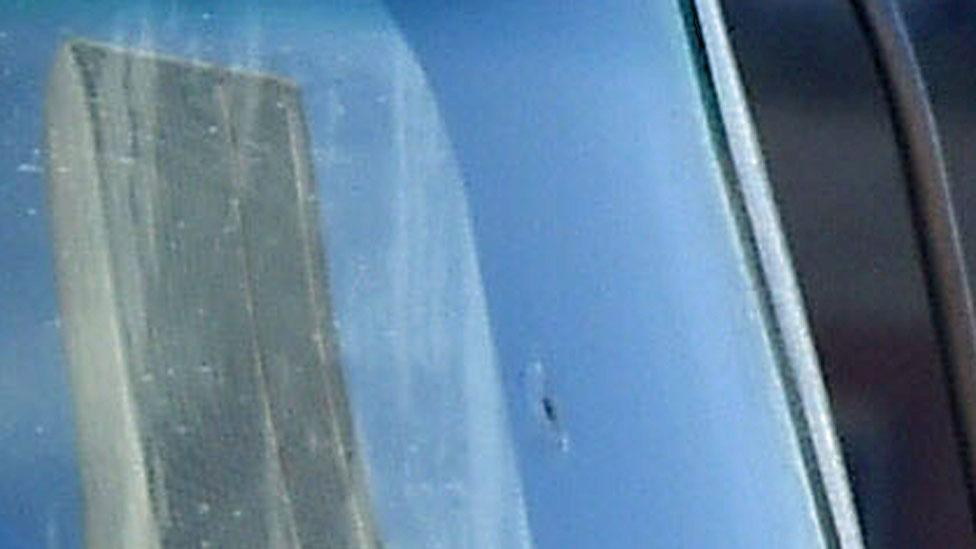
A close-up shows the hole in the front window of the bus, along with the reflections of nearby buildings
They could continue "nose on" in the normal direction of flight but could also be deflected sideways or into other angles.
And investigators would be able to find the direction of travel by examining the front and back surfaces of the window.

Forensic investigators examined the damaged bus
Philip Boyce, of forensic services company Forensic Equity, said the bullet could have entered through the front window and glanced off the ceiling of the bus before going out through the back.
Ricochets could carry for hundreds of yards, depending on the surfaces they hit but well within the distance between the bus and the site of Khan's shooting, he said.
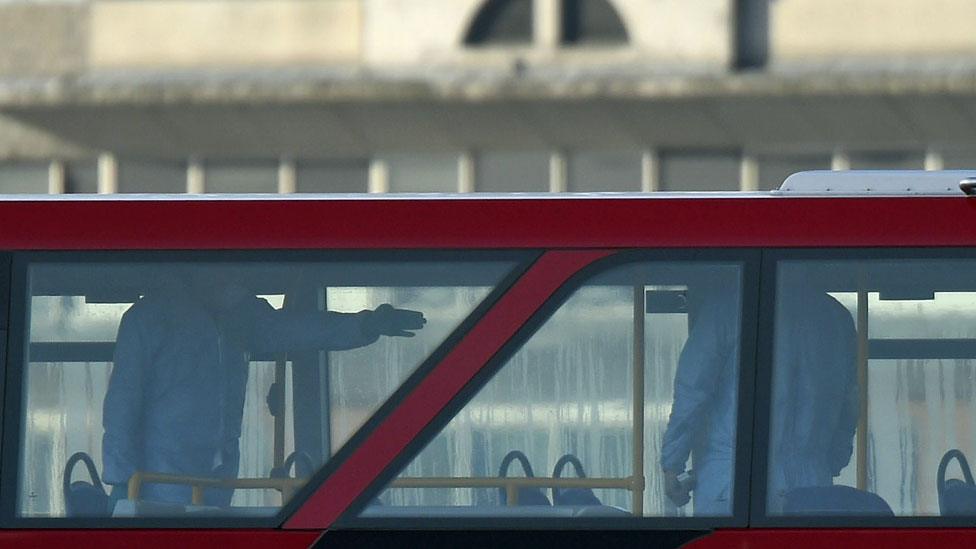
And their path could be altered by what they hit or passed through, such as laminated or toughened glass.
Transport for London confirmed that a bus was damaged during the incident - with the Metropolitan police suggesting that it could have been a ricochet from a police bullet.